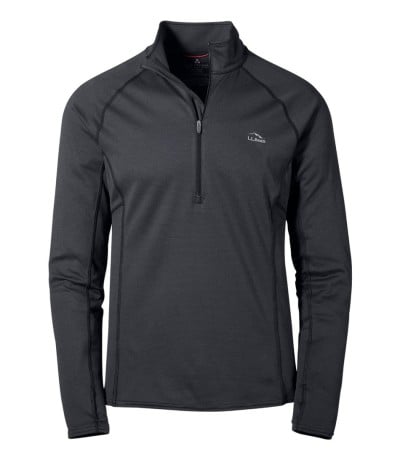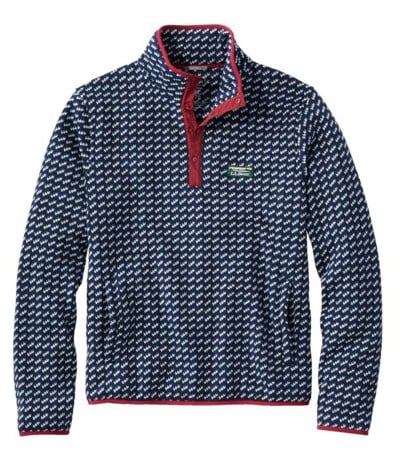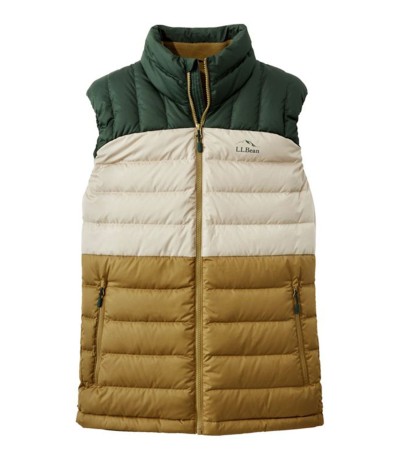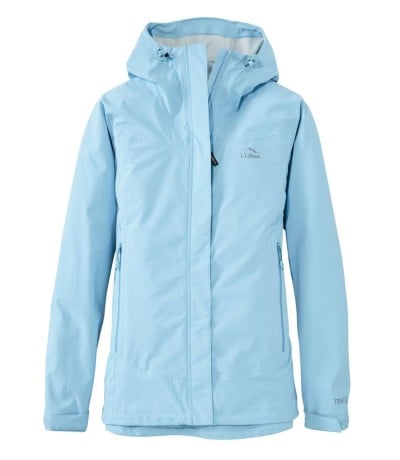(SPEECH)
[00:00:00.00] [SOFT MUSIC]
(DESCRIPTION)
[00:00:00.00] Text, L L Bean. How to Layer for Rain.
(SPEECH)
[00:00:04.04] Hi, I'm Nicole from the L.L.Bean Flagship Store in Freeport. And I'm here to talk to you today about how to choose the right layers for cold, rainy weather. I found that rainy days can be some of the most peaceful and memorable in the outdoors. And the parks and trails are often way less crowded.
[00:00:23.03] Layering for rain and cold is all about staying comfortable and dry, no matter what you have planned. Let's start with the key fundamentals. You'll want to include these three layers when you are heading out.
[00:00:36.03] First up, we have the wicking base layer. This moves sweat away from your body, so you can stay dry. You can choose lightweight, midweight, or heavy weight layers, depending on predicted temperatures and your planned activity level.
[00:00:49.29] Next up, we have the insulated mid layer. This adds warmth without overheating, so you can stay cozy. Think about how much you plan to exert yourself. The less you'll be moving, the more insulation you'll need. And depending on the season, you may want to pack an extra layer just in case.
[00:01:07.25] And finally, we have the weatherproof outer layer. This protects you from the elements, including wind and rain. When heading out in wet weather, the final layer is more important than ever. The best choice is a lightweight, breathable jacket that will shed moisture while allowing water vapor to escape, so you stay dry. Look for a waterproof rain shell with an adjustable hood and underarm vents.
[00:01:32.57] Other things to keep in mind-- fabric type. When it comes to layering, wool and synthetic fabrics are your best bet. While we all love cotton, it doesn't wick, and it isn't particularly warm, making it a poor choice for layering. And don't forget the bottom half. It's smart to bring along a pair of rain pants in case of a downpour, but hiking pants and synthetic, quick-dry fabrics will feel more comfortable for most activities.
[00:02:00.47] You can choose water resistant shoes or boots with good traction and pack an extra pair of wool or synthetic socks. And of course, winter accessories. Don't forget to tuck a hat and gloves into your pack. It's a fast way to add warmth. And when I'm heading out into the outdoors, my personal favorites for cold, rainy days are our cresta stretch rain jacket and my line vista camp pants. Stay dry, and have fun out there.
(DESCRIPTION)
[00:02:30.17] Droplets fall on a rain jacket. Logo, L L Bean.
[00:02:34.37] Text, Be an outsider.
[00:02:36.77] In a photo, hikers arrive at a summit as the sun sets behind them.
Rainy days can be some of the most peaceful—and memorable—outdoors, even when it’s cold out. We love the quiet, calming sound of the rain, along with the often less crowded parks and trails. And if you layer correctly, you’ll be comfortable and warm no matter what the weather has in store. Let’s start with the key fundamentals: three essential layers, each with its own function.
Up First: The Wicking Base Layer
Moves sweat away from your body so you stay dry
Choose lightweight, midweight or heavyweight layers, based on predicted temperatures and your planned activity level.
Next Up: The Insulated Mid-Layer
Adds warmth without overheating so you stay cozy
Think about how much you plan to exert yourself – the less you’re moving, the more insulation you’ll need. Depending on the season, you may want to pack an extra layer, just in case.
Finally: The Weather-Ready Outer Layer
Protects you from the elements, including rain and wind
When heading out in wet weather, the final layer is more important than ever. The best choice is a lightweight, breathable jacket that will shed moisture while allowing water vapor to escape so you stay dry. Look for a waterproof rain shell with an adjustable hood and underarm vents.
Other Things To Keep In Mind
Fabric Type
When it comes to layering, wool or synthetic fabrics are your best bet. While we love cotton, it doesn’t wick and isn’t particularly warm, making it a poor choice for layering.
Bottom Half
It’s smart to bring along a pair of rain pants in case of a downpour, but hiking pants in synthetic, quick-dry fabric will feel more comfortable for most activities. Choose water-resistant shoes or boots with good traction and pack an extra pair of wool or synthetic socks.
Accessories
Don’t forget to tuck a hat and gloves in your pack – it’s a fast way to add warmth.
"When I’m heading out, my favorites are our Cresta Stretch Rain Jacket and my lined Vista Camp Pants.”
– NICOLE, L.L.BEAN STORE REP










